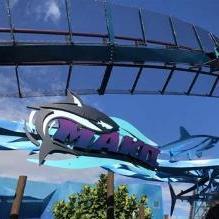-
Posts
9453 -
Joined
-
Last visited
-
Days Won
494
About JoshC.

- Birthday 04/06/1994
Previous Fields
-
Favourite ride
Chiapas
-
Favourite Theme Park
Phantasialand
Profile Information
-
Gender
Male
-
Interests
Theme Parks.
JoshC.'s Achievements
-
So to bring some additional clarity to the situation... -The park are awaiting a part. This is evident by the fact staff aren't working on it actively. This means it'll be closed a while. Even when the part arrives, they will require time to test it. -It is likely a bigger / more expensive / specialist part, hence why the park didn't have one already. This takes time to acquire; it's not like they ring up Intamin and say "Can we have 1 [thing from catalogue] please?" and Intamin ship it out the next day from their warehouse either. -Time frame is unclear at the moment. How long is a piece of string. -Thorpe have no intention of getting rid of Stealth.
-
I've had my suspicions all but confirmed in that Stealth's and Rita's are indeed unrelated. Thorpe will do their utmost to keep Stealth going, and I don't think we're anywhere near the point where they're considering getting rid of it. For those old enough to remember, Thorpe literally clung onto dear life with Slammer. It was closed more than it was open for a couple of years. S&S stopped manufacturing parts, so Thorpe sourced things elsewhere. They dedicated a lot of money and man hours into getting the thing running. Only once it had absolutely gone past the financial point of no return did they give up the ghost. And Stealth is obviously different; it is still such an iconic ride for the park, is a genuine reason that people visit, and generates money from merch sales. I'm not saying to take Stealth for granted, but at this point, there is no reason to think Stealth is facing an imminent closure in the next couple of years.
-
I don't believe Stealth and Rita's closures are related, although that is little more than a hunch right now. If there's an update, I'm sure it'll be shared quickly, but for now all we can assume is it is still waiting for either a part or advice from Intamin.
-
 JoshC. reacted to a post in a topic:
2025 Season
JoshC. reacted to a post in a topic:
2025 Season
-
Chessington Studios! Chessington World of IP! It's a good IP. But equally, it's a reasonably small space, so its success might be limited by that. I do wonder whether they are consciously turning Chessington into an IP heavy park (once Temu Nintendo World opens, nearing on half of the notable things on park will be IPs). Or if it's just been sheer coincidence each time they've decided the best project was an IP and we're at the stage we're at now. Either way, it'll be undeniable for Merlin to not recognise that.
-
Weather could be an answer, but if they're not comfortable/able to run it in mid-to-high 20s⁰C heat, then they're going to struggle over summer. The most frustrating thing is that by delaying it until an unknown date, they will have known for a while it wouldn't be ready for today. Which means they've left it until the last second to pivot the announcement. Now yeah, it's *just* the Skyride. But it still is poor communication. I guess in their mind their backs are already against the wall. Either way they'd have gotten flack, so they decided this was the best way to deal with it. I disagree, but oh well.
-
I don't know who writes those tweets, but they will be scheduled in advance (likely by the month at a minimum, maybe further). It's not an ideal thing to do when the ride the choose is experiencing extended downtime. I would think it's something they could schedule more on a weekly basis, to avoid such a potential issue. There is another question to raise, which is why they need to tweet opening times every week. These tweets seem to get minimal views / engagement, suggesting it's not furthering the audience's understanding of opening hours. Just seems a tad unnecessary from the outward perspective. I'm sure they've got reasons behind it backed up with whatever analytics, but yeah, I don't fully get it
-
Oh 100% agree there. Big problem. But even if the UK parks continued to develop / expand like they did during their peak / like European parks are doing now, they would still hit a natural ceiling. Thorpe could never really get beyond 2.5 million visitors, for example, I'd say. The reason, in my opinion, that there is no Top 25 theme park worldwide in the UK is because no one - until now - has set out to build one. As for the last successful innovative addition in the UK...I'd argue one of Saw, Thirteen and Smiler. Only Thirteen is truly innovative there. But all 3 of them bought huge attendance boosts, which were maintained, and have lasting power. -Saw worked because of the IP, gave Thorpe the best 3 years in terms of attendance. And it's still a big name for the park. -Thirteen saw Towers go above 3 million visitors for the first time since Nemesis opened. Has the innovation. And it still has that "gotcha" moment for guests. Not a headliner for the park though. -Smiler's obviously been plagued with issues, but so many people know it, and it's branding is super strong. But yeah, the fact that it's been about 15 years since anything truly, successfully innovative washed up on these shores tells the story.
-
The reality of why there's no top worldwide theme park in the UK is a little more nuanced to be fair. All our major parks were first built 40+ years ago. Their locations aren't designed with being a big big hitter park in mind. None of them have the associated infrastructure outside the park to cope with more than 3-4 million a year, let alone more than double that. Imagine what the roads around Towers would be like with those numbers. What the public transport would be. What Thorpe would be like, with queues of cars backing up to the M25 from both directions. You could argue why haven't Merlin tried to utilise their understanding of the UK market to push and create that big hitter park from scratch. But equally, you then ask, do they need to, and is the UK the right place to do that. And then, until recently, no big non-UK operator has had any success inside the UK. It's a difficult nut to crack. Universal will have spent many years researching this, planning this, etc, long before we even got a whiff of the idea a couple of years back. Which is why it'll undoubtedly be a success. But yeah, whilst the "no top theme park" line is a dig at Merlin, it is probably backed up with a deep understanding of why that is the case, and it's not just 'lol Merlin suck'
-
Legend goes that an old woman pleaded with the Monks of Thorpe Abbey for the charity of a coin. They cruelly dismissed her. Scorned, the old woman screamed a cursed... "For every piece of Kingda Ka that falls, a month of Stealth's life will be taken" And sure enough, after Kingda Ka was removed, Stealth was shut for a month. --- All I'm saying, is that if Stealth remained closed, that will be the story for the Fright Nights mazes that will take its place. Hex Inferno - The Revenge of Stealth
-
Yeah, track replacing seems to have been pushed aside for now. Whether it was the issues with the previous new piece of track, a shift in strategy or something else that is the reason for that, we'll never know. I'm not a fan of Colossus - I can tolerate it on the front row (which is the only place I've ridden it in the last 8 or 9 years, and even then, I can count the number of rides I've had on it on one hand). But it does still seem to attract a reasonable crowd and runs reliably enough for now. But yes, it doesn't quite have the draw of a Nemesis or a Vampire. On the other hand, the park still have plenty of other development spots before they'd have to consider ripping rides out, so Colossus may hang on for a good while yet. My biggest concern with losing Colossus would be that we would no doubt lose the fun pathway that goes through the ride. Merlin just don't build rides which interact with walkways these days, and I'd be surprised if a potential Colossus replacement has anything beyond a straight pathway running alongside the ride, as opposed to a nice hill or similar.
-
I wonder if with the cuts / redundancies, the people who would usually be responsible for things like that (ie app / website updates) have been let go / had their job modified and people there just haven't joined up the dots for what needs to be done?
-
 JoshC. reacted to a post in a topic:
2025 Season
JoshC. reacted to a post in a topic:
2025 Season
-
Interesting, not something I've really heard before. Whilst Intamin don't make Accelerators any more, I'd be surprised if they completely stopped making parts - or at the very least having an active role in their production. There's still multiple out there which certainly aren't near their end of life, so it would make sense for them to still provide for the parks that operate them. Regarding the current closure, I believe Thorpe are in contact with Intamin to find a solution to whatever the issue is. Seems to be a new issue which just has rubbish timing of happening at the start of the season
-
I can definitely imagine some UK theme park staff will be tempted by a move. Moving from (say) the Surrey parks towards Bedford isn't a huge distance / upheaval. Prices for rent etc will be similar. Salary will probably be similar. But the draw for UK people to be able to say they work at Universal will be big. When I worked at Thorpe, which is when the London Resort park seemed potentially possible, I know people were saying they would be looking to move if it happened. I especially think your middle-manager folk will be tempted. It could represent career progression, that opportunity to be a part of something new and big, and look at going somewhere else if they become disgruntled with Merlin. Same could also be said for engineers and maybe even those slightly higher up. Universal will have their own Creative Team, Senior Leadership, etc in mind and happy to relocate as necessary. But they'll need plenty of people from the UK, and I'm sure they wouldn't grumble at people who have multiple years at the top UK theme parks coming over. This is what I've always said is the biggest risk for Merlin: the short term loss of staff. I think they'll be fine with visitation, and the premium price and product of Universal will just add a layer to the dynamic of the UK industry, rather than completely change it. But they will struggle if there's an exodus of staff looking to see if the grass is greener. I also think staffing for Halloween will become significantly harder. I can imagine loads of scare actors will have their heads turned at the prospect of saying they worked at Halloween Horror Nights for example. Even ones who live in Surrey (for example) will be happy to relocate for a couple months if needs be.
-
They do have spare parts for certain things. But it is physically impossible for basically any park to have every spare part possible for a ride stored at the park.
-
Yeah, no. Terrible idea. Intamin still manufacturer parts for their accelerators. And it's not like it's 'just' a piece of track, which any company can manufacturer fairly easily. Thorpe should 100% continue to order parts for Stealth from Intamin, and continue whatever maintenance programme they've followed the last few years. It's easy to forget, but it's been pretty damn reliable and consistent the past few years.


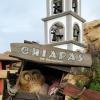
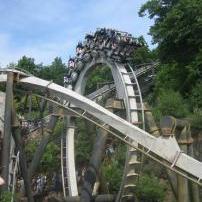
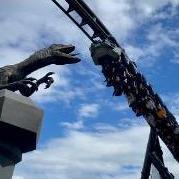

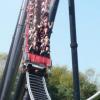



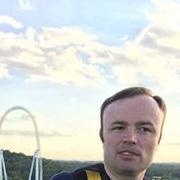

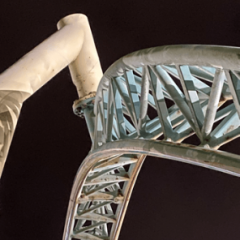


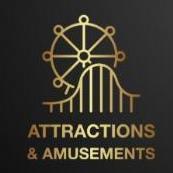

.thumb.png.ae62487961fbf986a4aaa917b0aa3016.png)

